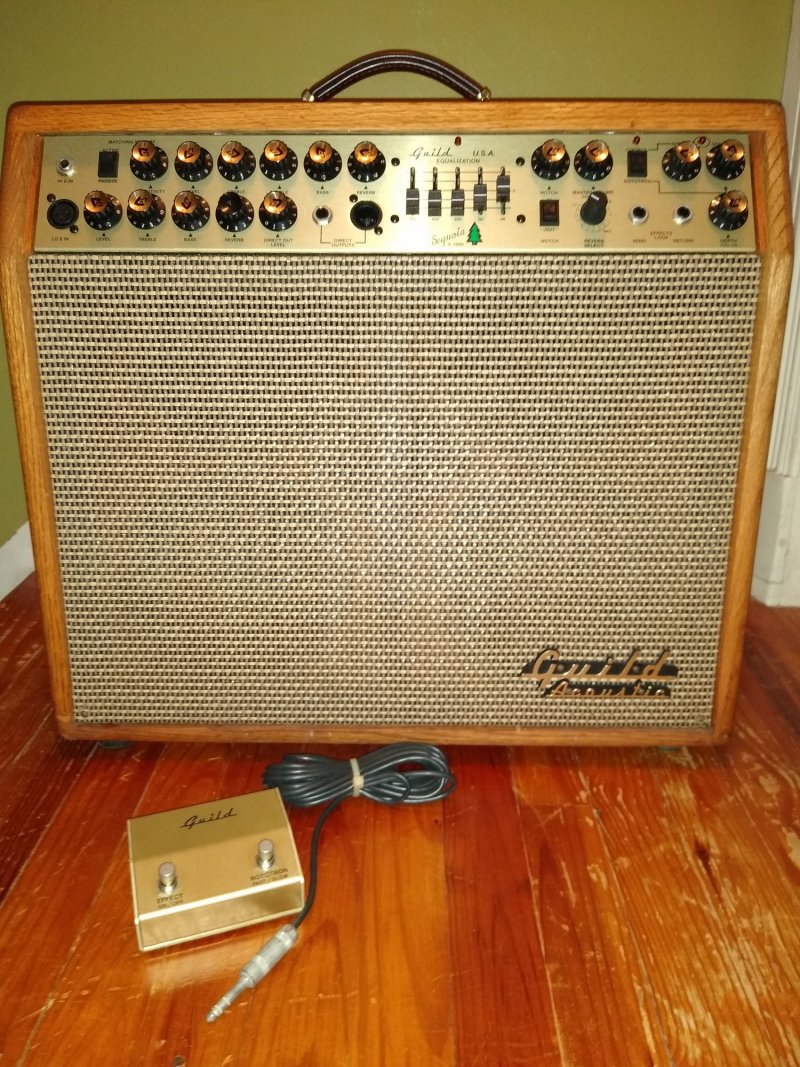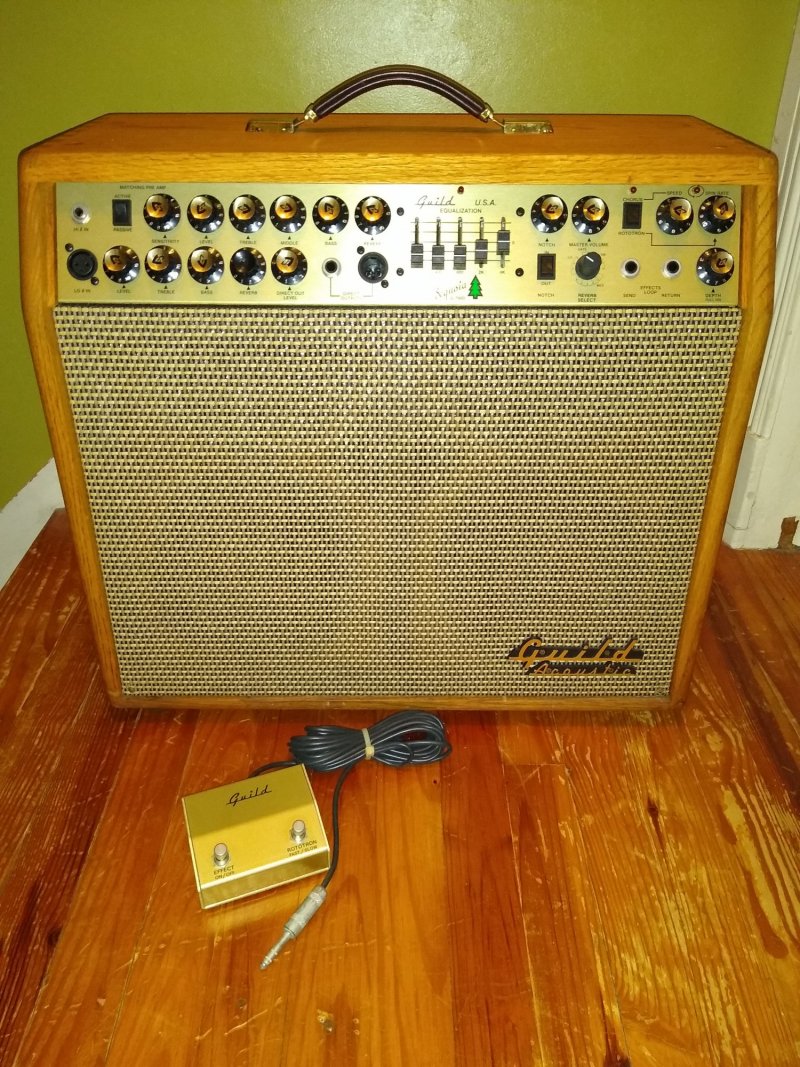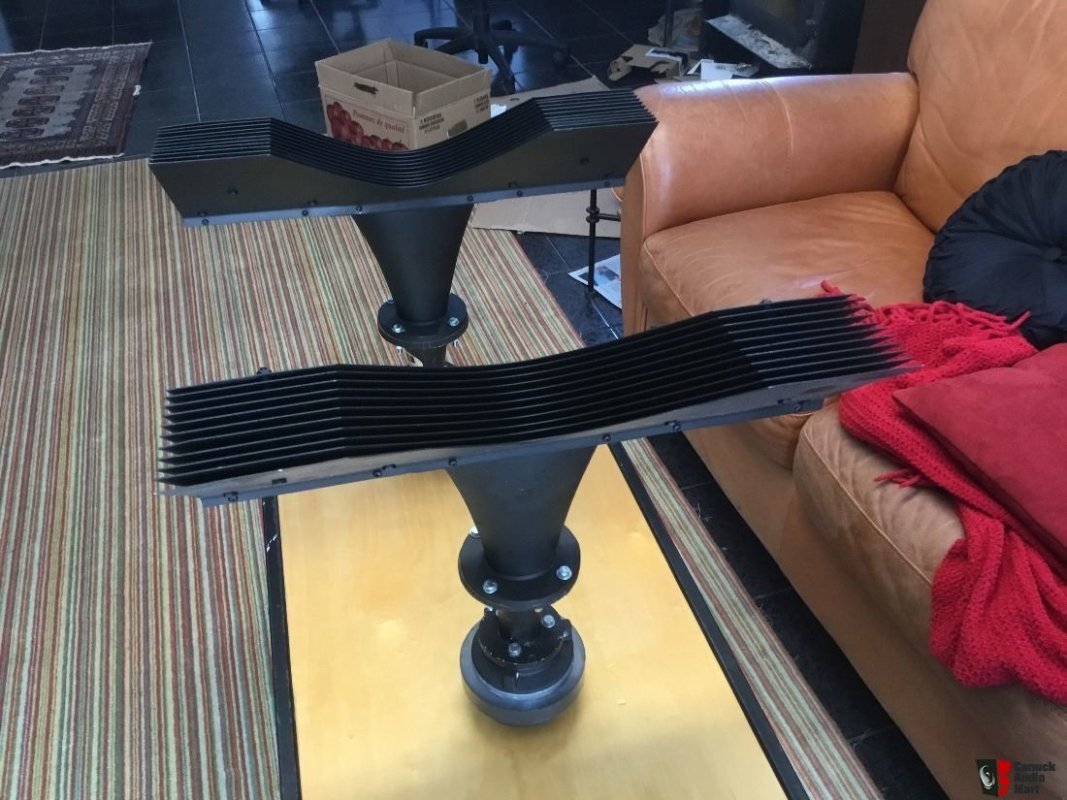I came across this 1994 Guild G-700-D Sequoia amp and couldn't resist. This is a very hard to fine version with a digital reverb unit provided by Alesis!
The Timberline amps come up in discussions from time to time and GAD has done reviews of most of the amps in this short lived amp line as well as an overview of the entire line. These solid oak housed amps came out around the time that "acoustic" guitar amps were a new concept. I had seen a few Sequoia amps for sale over the past few years but not many. One of the features of the Sequoia that attracted me was having two input channels one of which is an XLR input channel. I have always liked the sound of a mic'd acoustic instrument better than an onboard pickup, under saddle or sound hole. With this amp I have a number of options; use both channels in combination for one instrument, one mic'd instrument and a second with an onboard pickup, one instrument with an onboard pickup and a mic for vocals.
This combo solidstate amp has two separate channels with two 8" Eminence parallel connected speakers per channel and a compression driver horn with a heavy cast bell, not plastic, parallel connected to the left channel. There is no crossover network for the horn. The horn may have been made by Eden, per Randall/Guild amp designer Kevin Nelson's 2017 comments to GAD about his "Guild Timberline Acoustic Amplifiers" review. The 8" speakers are the same Eminence speakers used in the Guild Tamarack amp per GAD's "Guild G300 Tamarack Acoustic Amplifier" review.
The amp's digital reverb is has a natural sound and a wide range of settings. I wasn't surprised when I had seen the Alesis label on the PCB. I am a big fan of Keith Barr's MXR and Alesis companies. I was always an MXR pedal guy from the 70's to the end in the early 80's. Keith Barr had some innovative ideas from the beginning. He designed the original MXR Envelope Filter analog pedal in the 70's using only digital logic ICs as a personal challenge. This digital reverb unit is very similar to the Alesis Microverb II units sold in the late 80's.
Again as a fan of analog pedals of the 70's and 80's the chorus and rotary effects built into most of the Timberline amps are bucket brigade IC based. MN3007 specifically. As GAD mentioned in his reviews, settings of just a little go a long way. But I do like the vintage sound of the chorus.
Unlike the other Timberline amps the Sequoia does not have an ultra high frequency "pelectron" control on either channel but does have an active five band equalizer before the power amp stages.
All in all I really like this amp for acoustic guitars as well as jazz boxes. I still need to do more experimenting with the XLR channel and different microphones to find the best setup for my use. I have included a few photos but have a few more if anyone is interested. (The only missing part on this amp is the gold Guild logo shield on the XLR channel reverb knob. I have since found a gold replacement. All else appears to be original.)
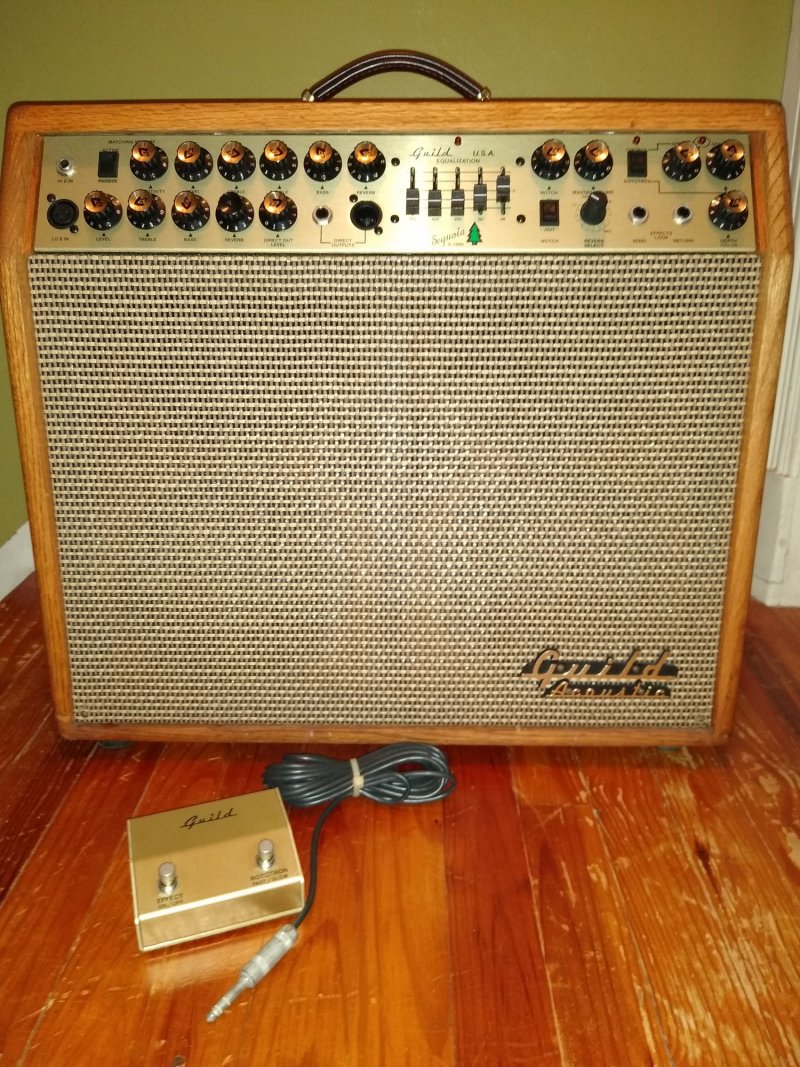
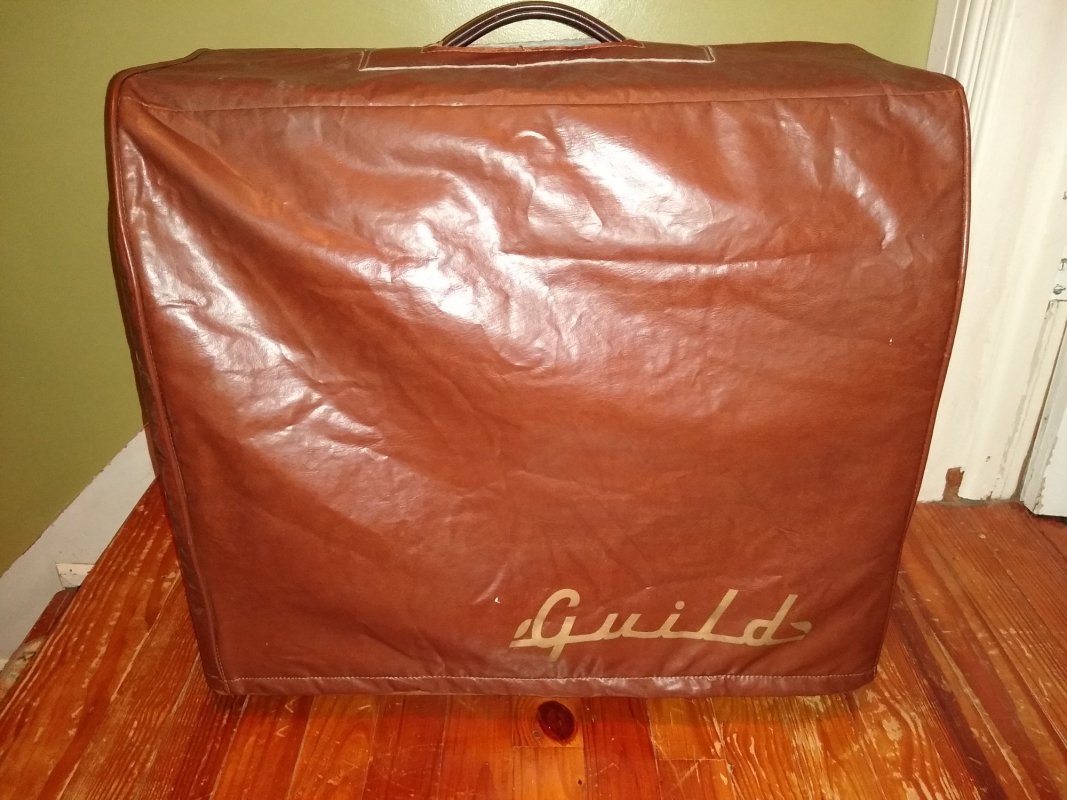
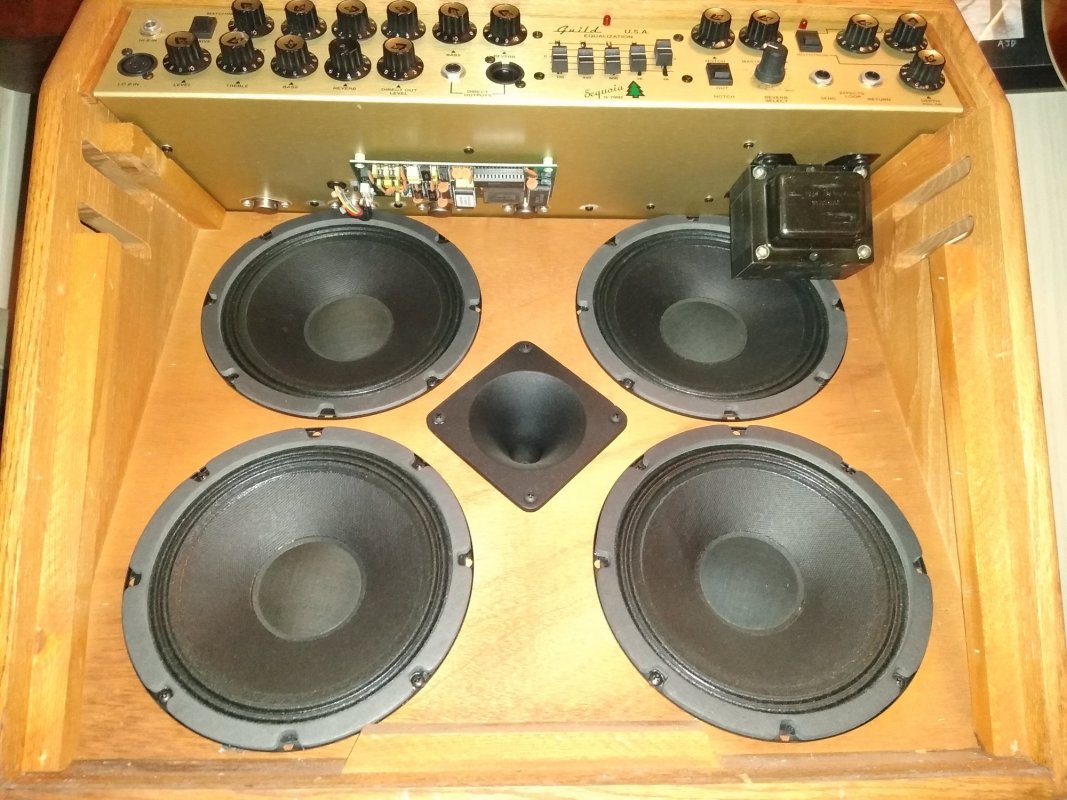
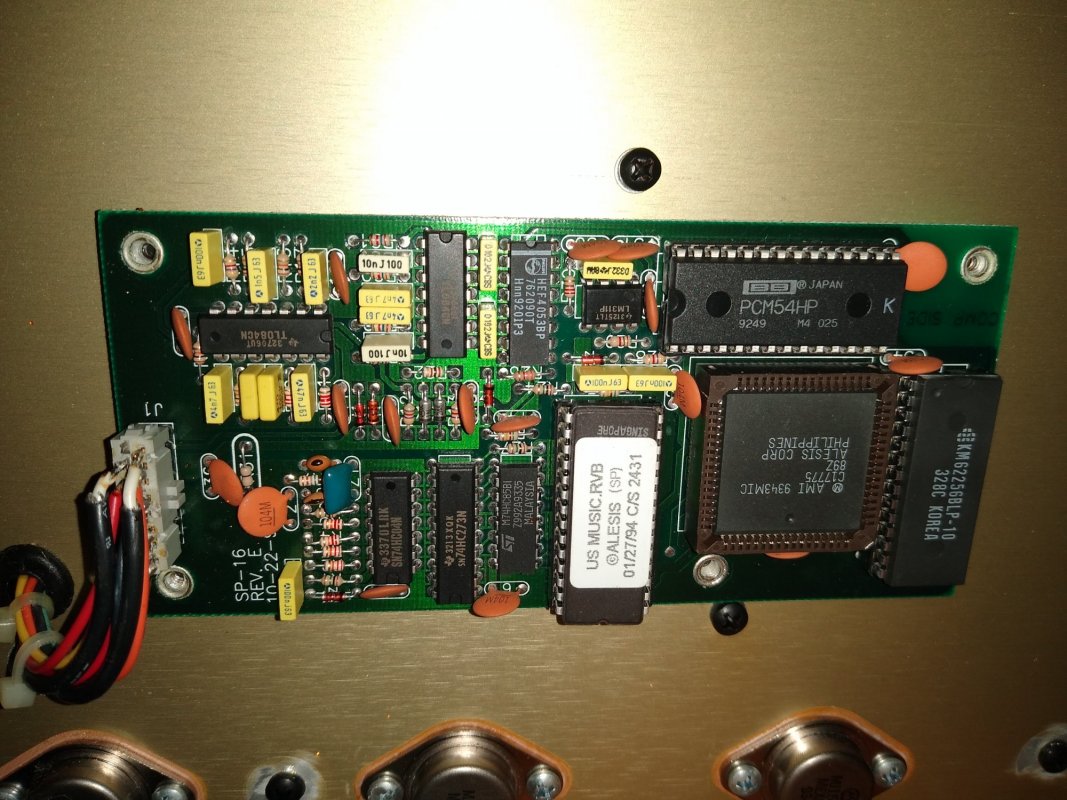
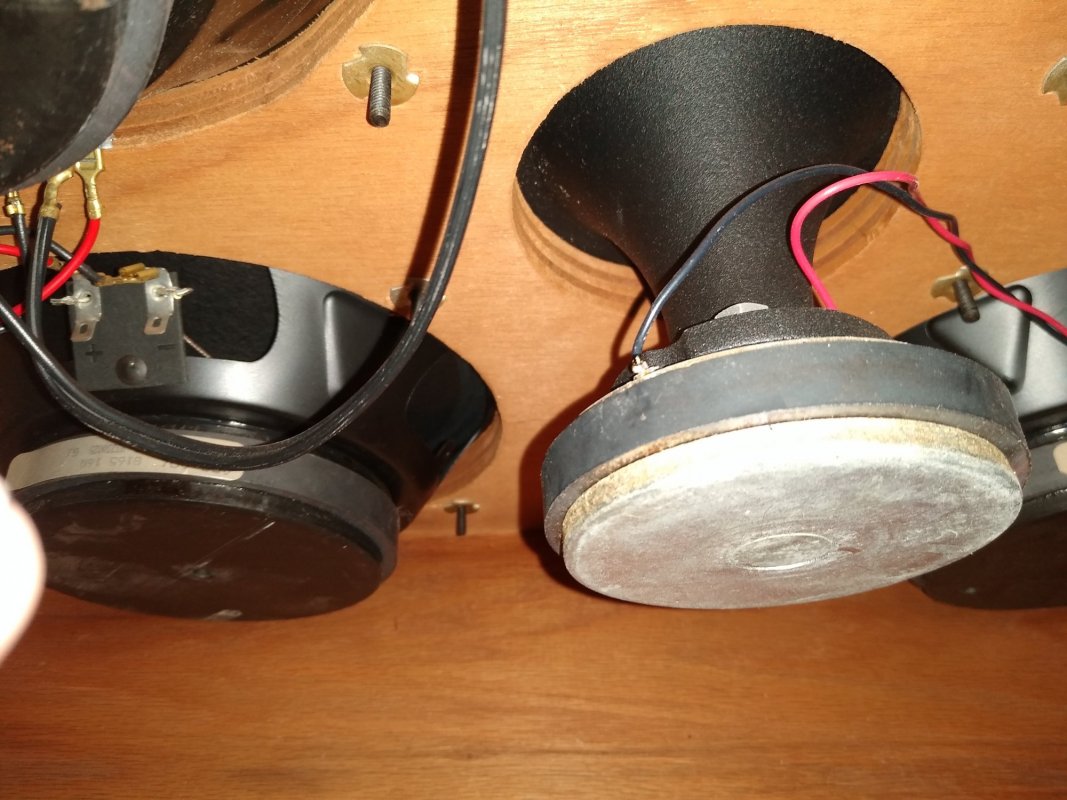
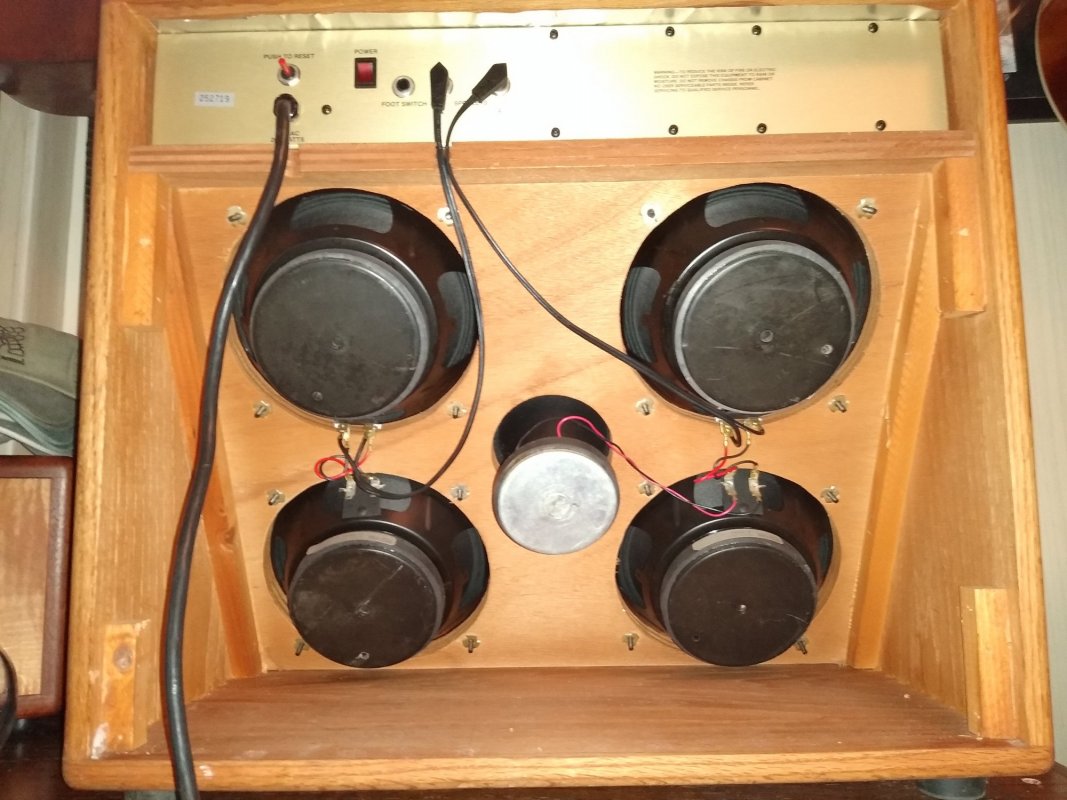
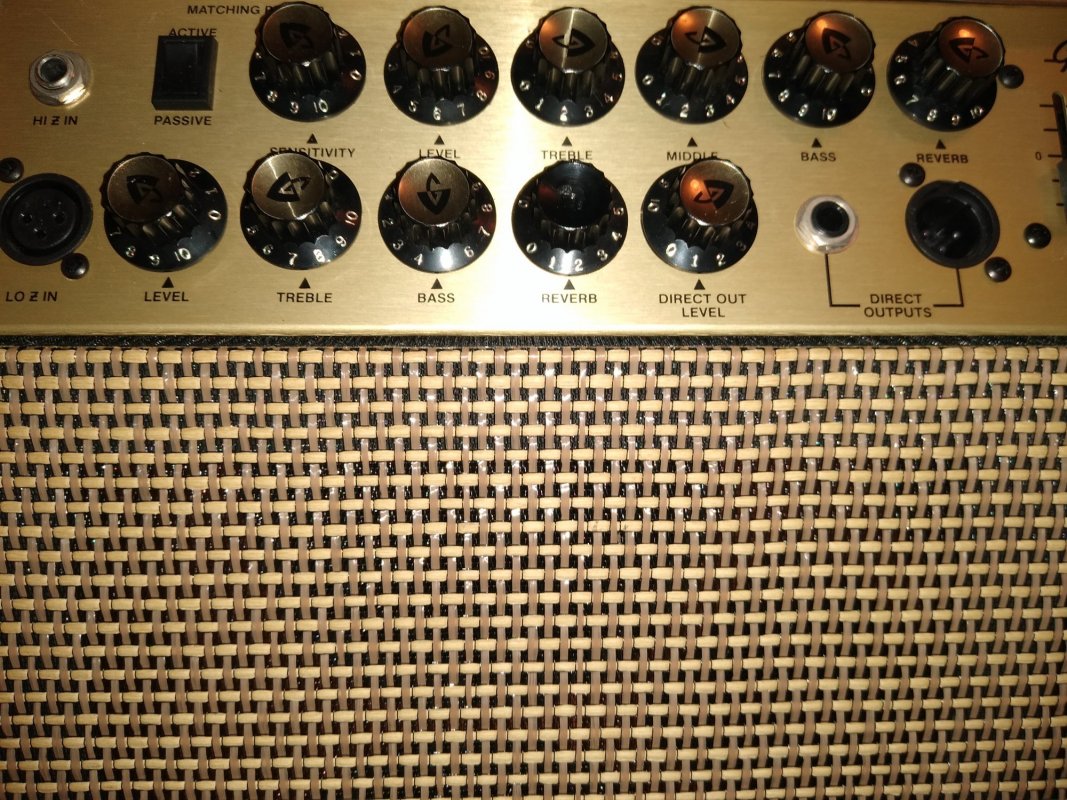
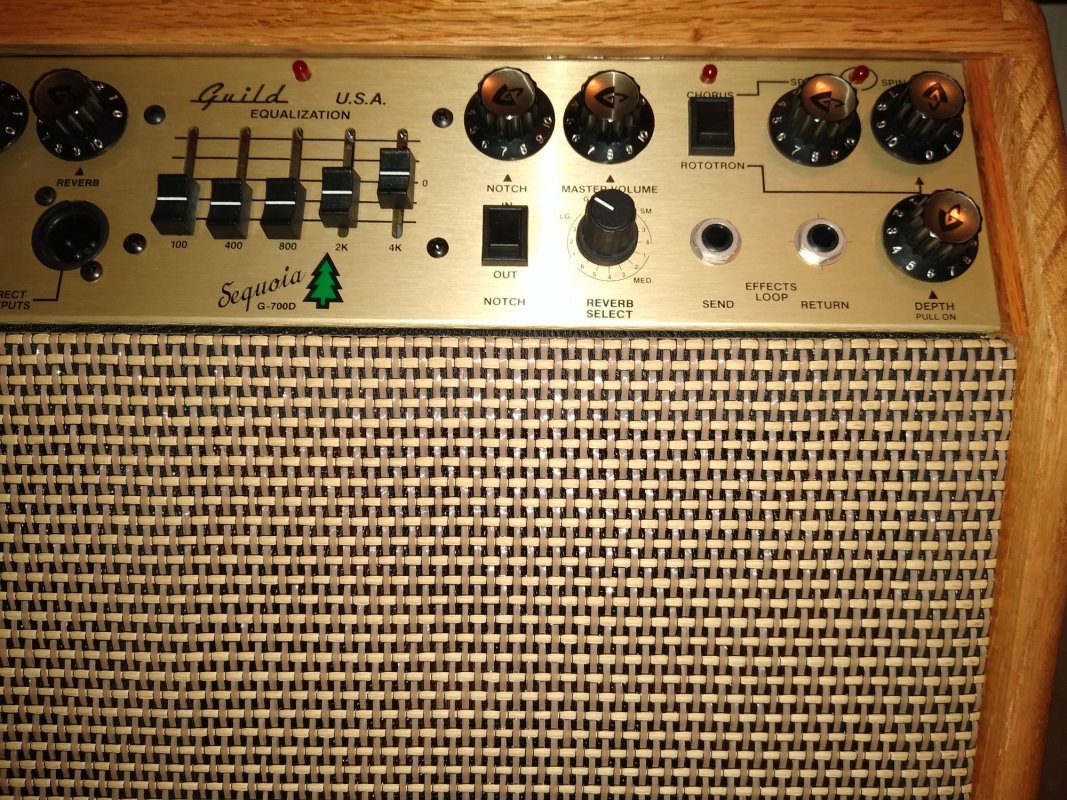
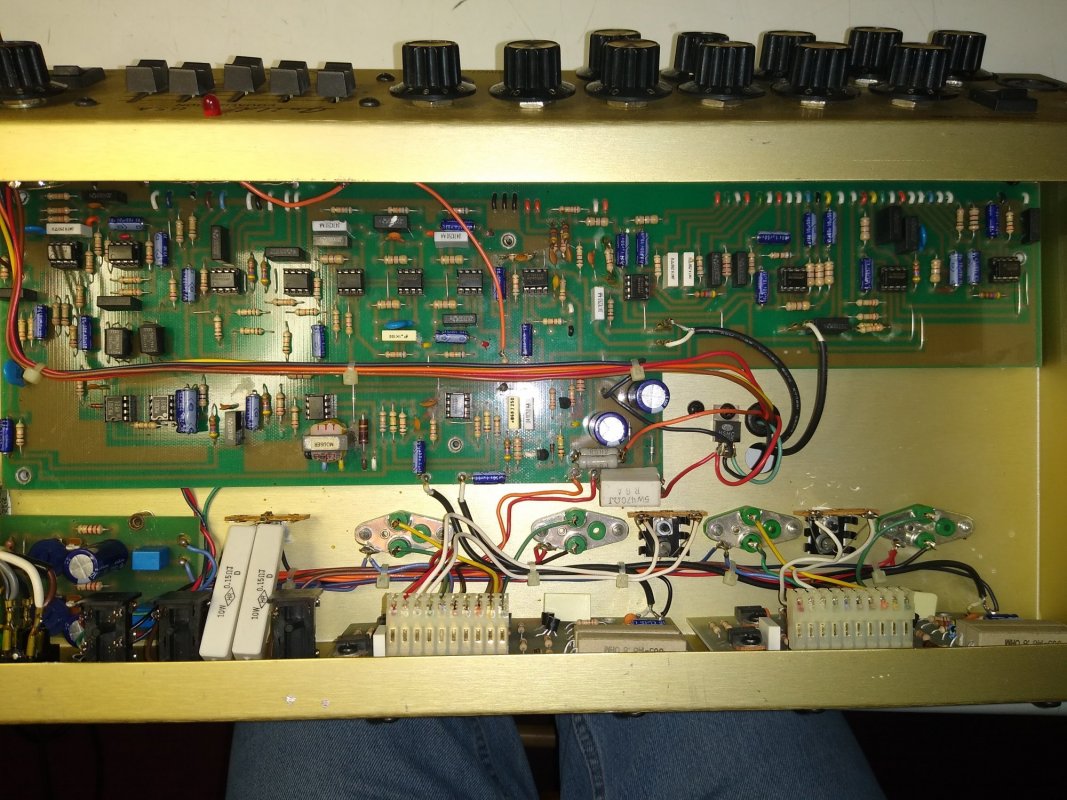
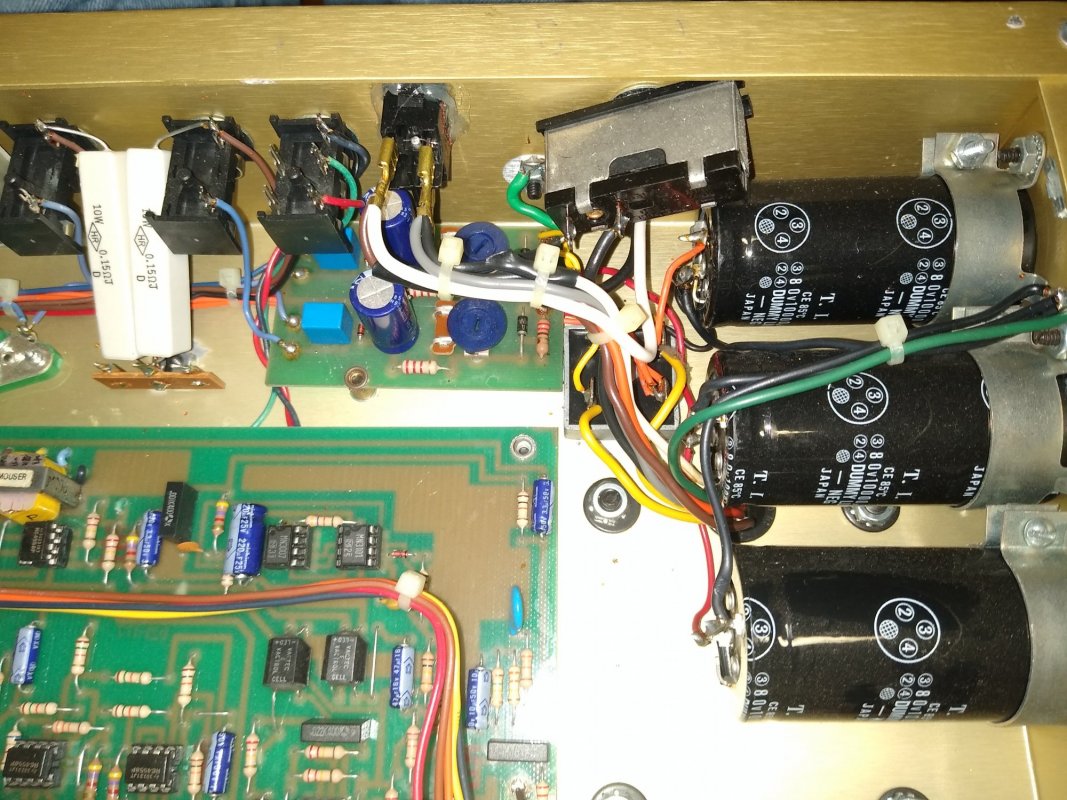
The Timberline amps come up in discussions from time to time and GAD has done reviews of most of the amps in this short lived amp line as well as an overview of the entire line. These solid oak housed amps came out around the time that "acoustic" guitar amps were a new concept. I had seen a few Sequoia amps for sale over the past few years but not many. One of the features of the Sequoia that attracted me was having two input channels one of which is an XLR input channel. I have always liked the sound of a mic'd acoustic instrument better than an onboard pickup, under saddle or sound hole. With this amp I have a number of options; use both channels in combination for one instrument, one mic'd instrument and a second with an onboard pickup, one instrument with an onboard pickup and a mic for vocals.
This combo solidstate amp has two separate channels with two 8" Eminence parallel connected speakers per channel and a compression driver horn with a heavy cast bell, not plastic, parallel connected to the left channel. There is no crossover network for the horn. The horn may have been made by Eden, per Randall/Guild amp designer Kevin Nelson's 2017 comments to GAD about his "Guild Timberline Acoustic Amplifiers" review. The 8" speakers are the same Eminence speakers used in the Guild Tamarack amp per GAD's "Guild G300 Tamarack Acoustic Amplifier" review.
The amp's digital reverb is has a natural sound and a wide range of settings. I wasn't surprised when I had seen the Alesis label on the PCB. I am a big fan of Keith Barr's MXR and Alesis companies. I was always an MXR pedal guy from the 70's to the end in the early 80's. Keith Barr had some innovative ideas from the beginning. He designed the original MXR Envelope Filter analog pedal in the 70's using only digital logic ICs as a personal challenge. This digital reverb unit is very similar to the Alesis Microverb II units sold in the late 80's.
Again as a fan of analog pedals of the 70's and 80's the chorus and rotary effects built into most of the Timberline amps are bucket brigade IC based. MN3007 specifically. As GAD mentioned in his reviews, settings of just a little go a long way. But I do like the vintage sound of the chorus.
Unlike the other Timberline amps the Sequoia does not have an ultra high frequency "pelectron" control on either channel but does have an active five band equalizer before the power amp stages.
All in all I really like this amp for acoustic guitars as well as jazz boxes. I still need to do more experimenting with the XLR channel and different microphones to find the best setup for my use. I have included a few photos but have a few more if anyone is interested. (The only missing part on this amp is the gold Guild logo shield on the XLR channel reverb knob. I have since found a gold replacement. All else appears to be original.)










